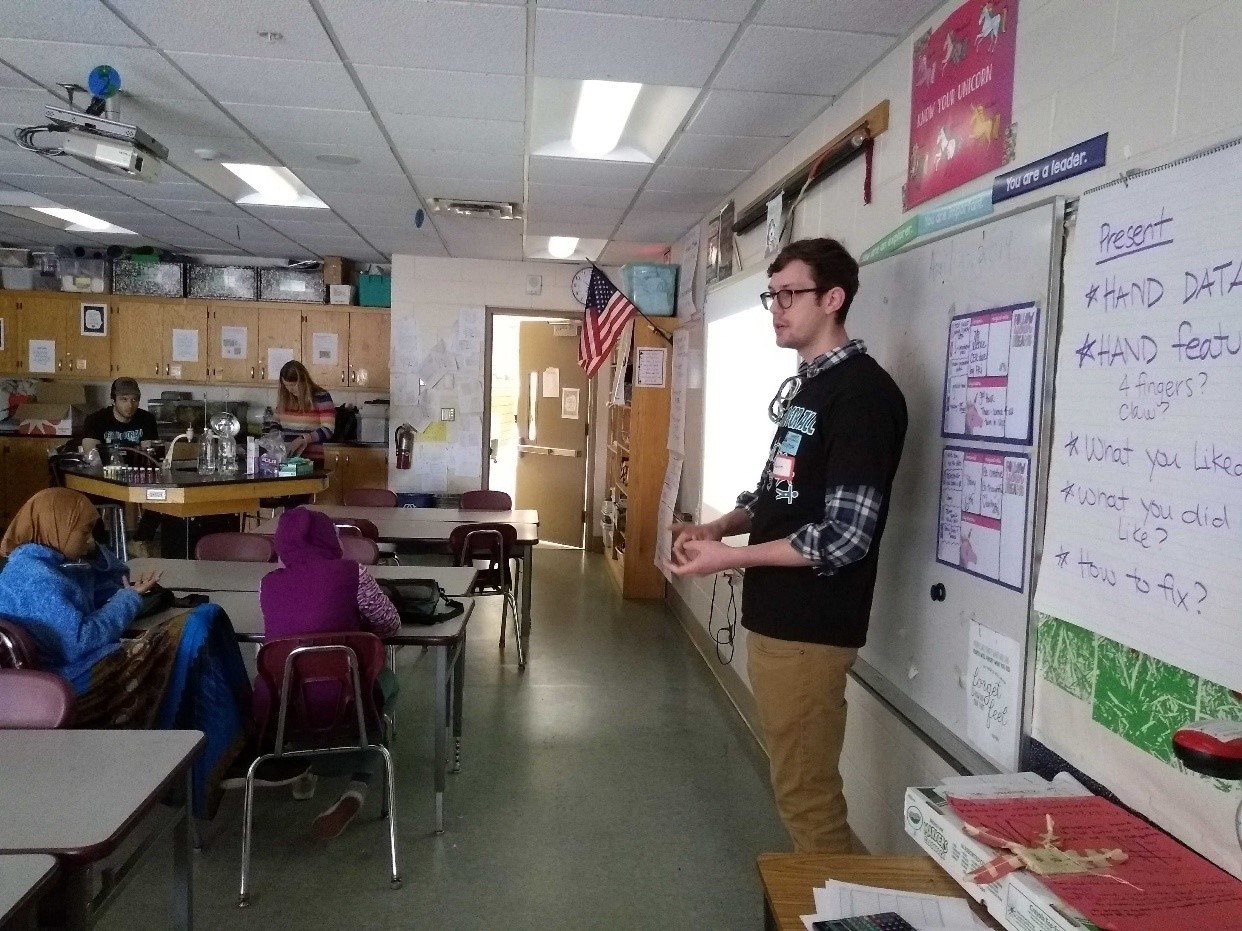05.09.2019
Experiment Leaders: Aaron and Jake
Today marked our final visit to Marcy Open School of 2018-2019, capping off a memorable year! We discussed the carbon cycle and the disturbances to the stability of this cycle caused by anthropogenic carbon emissions and land use change. At the beginning of our session, Aaron taught the students about the roles that carbon plays on earth, specifically through the role of carbon dioxide (CO2).
Then, Jake led the group in an interactive “simulation” game, modeling the behavior of carbon on earth. Students played the role of carbon atoms and were transported throughout the game between the atmosphere, soil and plants, and the ocean through “photosynthesis” (uptake of carbon by plants and other organisms in the soil and plants or ocean) and “respiration” (release of carbon from the soil and plants or the ocean to the atmosphere by animals, fungi, and other organisms). At the beginning of the game, players were split up between the soil and plants and the ocean. Each player had a die and a coin. At the beginning of every turn, players in the soil and plants and the ocean rolled their dice; those that rolled a six underwent “respiration” to the atmosphere. Next, all players in the atmosphere (including any that had started the turn there) flipped their coins. If they flipped heads, they would be “photosynthesized” by the soil and plants and if they flipped tails, they would be “photosynthesized” by the ocean. Both the soil and plants and the ocean had a set capacity, however, and if this capacity was full, a player in the atmosphere attempting to enter that area would “accumulate” in the atmosphere.
As the game went on, we changed some of the parameters, “emitting” some CO2 from fossil fuel sources (mentors began to play the game as well), “acidifying” the ocean (increasing the carbon storage capacity of it), and inflicting “deforestation” (decreasing the carbon storage capacity of the plants and soil). At each change, students noticed how these small changes dramatically increased the amount of CO2 in the atmosphere.
Along the way, students also participated in several small experiments. In the first experiment, Aaron set two clear two liter soda bottles half filled with water up next to a heat lamp and dropped Alka-Seltzer tablets into one bottle. The dissolving Alka-Seltzer tablet emitted gaseous CO2 into the bottle and, as a result, the temperature of air inside that bottle (monitored by a thermometer) was higher than the temperature of the CO2-free bottle. This is a result of the propensity for CO2 to trap heat efficiently, known as the “greenhouse effect.”
In the second experiment, students received cups of water mixed with red cabbage juice, an indicator of solution acidity or basicity (pH). They then blew into the cups through straws, allowing their CO2-rich breath to bubble through the water. They saw that the color (and pH) of the solution changed as they blew, demonstrating that CO2 causes acidification of water, as occurs in our oceans. Finally, Aaron demonstrated that CO2 addition to a solution of calcium hydroxide causes formation of solid calcium carbonate (CaCO3) by bubbling evaporating dry ice through the solution. This demonstrated a possible method for storage of excess atmospheric CO2.
At the end of the experiment, we asked the students to brainstorm ways to decrease the carbon concentration in the simulation’s “atmosphere.” They concluded that the best ways were to stop “emitting” carbon through fossil fuels (mentors stopped joining the game) and to “capture” some carbon (some players in the “atmosphere” were removed from the game).
The students learned about the role of carbon on earth and the impact human activity has had on this role during this activity. We hoped to convey to them an appreciation for the changes humanity has made to the environment and the ways we can rectify this situation in the future.